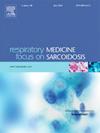Epistaxis in COVID positive ICU patients, implications, and future interventions
IF 3.5
3区 医学
Q2 CARDIAC & CARDIOVASCULAR SYSTEMS
引用次数: 0
Abstract
Purpose
Epistaxis in critically ill patients may prevent the use of non-invasive ventilation and impair nasal oxygen delivery. Since the onset of COVID-19, high-flow nasal oxygen has dramatically increased. There is a paucity of literature on characteristics of epistaxis in critically ill, COVID-19 positive patients. We aimed to establish the incidence of epistaxis and identify risk factors.
Materials and methods
This was a retrospective observational study conducted at a large academic medical center. Chart review was performed on patients with an intensive care admission and COVID-19 diagnosis between January 2020 and May 2022. Data included epistaxis events, supplemental oxygen delivery and duration, anticoagulation, and antiplatelet therapies.
Results
932 patients met study criteria. Epistaxis incidence was 7.4 %. Of those with epistaxis, 78 % were administered supplemental oxygen. For each additional day on nasal oxygen, patients were at a 7.1 % higher risk for epistaxis (p < .001). Most antiplatelet agents and therapeutic anticoagulation were not found to increase risk.
Conclusions
Nasal oxygen was a major risk factor for epistaxis in this population. Nasal hygiene is a standard regimen recommended by otolaryngologists for epistaxis. Protocolizing the inclusion of nasal hygiene measures may be an easy, inexpensive way to prevent epistaxis in this already unstable patient population.
COVID 阳性 ICU 患者的鼻衄、影响和未来干预措施。
目的:危重病人鼻衄可能会妨碍无创通气的使用,并影响鼻腔供氧。自 COVID-19 推出以来,高流量鼻氧急剧增加。有关 COVID-19 阳性重症患者鼻衄特征的文献极少。我们旨在确定鼻衄的发生率并识别风险因素:这是一项在大型学术医疗中心进行的回顾性观察研究。我们对 2020 年 1 月至 2022 年 5 月期间入院接受重症监护并确诊为 COVID-19 的患者进行了病历审查。数据包括鼻衄事件、补给氧量和持续时间、抗凝和抗血小板疗法:结果:932 名患者符合研究标准。鼻衄发生率为 7.4%。在鼻衄患者中,78% 的患者接受了补充氧气治疗。每多使用一天鼻氧,患者发生鼻衄的风险就会增加 7.1%(p < .001)。大多数抗血小板药物和治疗性抗凝剂不会增加风险:结论:鼻氧是该人群鼻衄的主要风险因素。鼻腔卫生是耳鼻喉科医生推荐的治疗鼻衄的标准方案。将鼻腔卫生措施纳入规程可能是一种简便、廉价的方法,可预防已不稳定的患者群体发生鼻衄。
本文章由计算机程序翻译,如有差异,请以英文原文为准。
求助全文
约1分钟内获得全文
求助全文
来源期刊

Respiratory medicine
医学-呼吸系统
CiteScore
7.50
自引率
0.00%
发文量
199
审稿时长
38 days
期刊介绍:
Respiratory Medicine is an internationally-renowned journal devoted to the rapid publication of clinically-relevant respiratory medicine research. It combines cutting-edge original research with state-of-the-art reviews dealing with all aspects of respiratory diseases and therapeutic interventions. Topics include adult and paediatric medicine, epidemiology, immunology and cell biology, physiology, occupational disorders, and the role of allergens and pollutants.
Respiratory Medicine is increasingly the journal of choice for publication of phased trial work, commenting on effectiveness, dosage and methods of action.
 求助内容:
求助内容: 应助结果提醒方式:
应助结果提醒方式:


